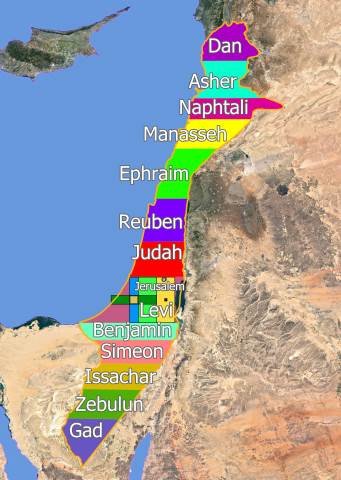Blessed is he that waiteth, and cometh to the thousand three hundred and five and thirty days. (Daniel 12:12)
1335 days is the period between the Jewish holidays of Tu BiShvat (New Year of the Fruit of the Trees) and Simchat Torah (8th day of Sukkot, Tabernacles) of the 4th year after the tree was planted in Israel, according to Leviticus 19:23-25.
The holiday of Tu BiShvat is not in the Torah. This holiday was invented by the sages to fulfill the law:
And when ye shall come into the land, and shall have planted all manner of trees for food, then ye shall count the fruit thereof as uncircumcised: three years shall it be as uncircumcised unto you: it shall not be eaten of.
But in the fourth year all the fruit thereof shall be holy to praise the Lord withal.
And in the fifth year shall ye eat of the fruit thereof, that it may yield unto you the increase thereof: I am the Lord your God.
(Leviticus 19:23-25)
The age of a tree is determined by the beginning of the civil year on the 1st day of the 7th month, Rosh Hashanah. This day is in September-October, and the fruits of the trees may already be ripe by this time. It is necessary to somehow determine those fruits that belong to the 4th year of the tree. It was decided to consider the fruits of the 3rd year of the tree, the ovary of which formed after the 15th day of the 11th month of Shvat (January-February), as permitted for consumption after the beginning of the 4th year.
The first 3 years the fruits of the tree are considered "uncircumcised" and are forbidden to eat. In the 4th year these fruits can be eaten on the autumn feasts of the Lord, only in Jerusalem and only in a state of ritual purity. In the 5th year the fruits of the tree planted in Israel can be eaten by everyone.
Thus, the expression "blessed is he who waits and reaches the 1335 days" can be interpreted as "blessed is he who waits and reaches the time when he can enjoy the fruits of his activity in Israel." Well, something like that.
I also need to say a little about the Lord’s feast Simchat Torah. This is the greatest feast of the Bible. On this day, the annual cycle of reading the Torah ends and on the same day, a new cycle of reading begins. The name of the feast speaks for itself: "The Joy of the Torah" or "The Triumph of Learning".
Now we need to talk about the name of the holiday Tu BiShvat. "Tu" is the Hebrew letters "tet" and "vav", in Hebrew numerals are written with letters, and these two letters give the number 9 + 6 = 15, the 15th day of the month of Shvat. Why not in the decimal system? Because if we write in the decimal system, we need to write the letters "yod" and "he", 10 + 5, and these are the first two letters in the sacred name of God, in the Tetragrammaton. Superstitious tradition forbids Jews to use this name.
If we are not subject to this superstition, then we would write the name of the holiday as "Yah BiShvat ". The word "shvat" is not only the name of the month in Hebrew. "Shvat" also means "tribe", in the sense of the tribe of Israel. Then the name of the holiday will mean "Yah[weh] in the tribe [of Israel]."
Now we must also add that in the Jewish calendar, a year can have different lengths: 353, 354, 355, 383, 384 or 385 days. Accordingly, the term of 1335 days is fulfilled not every year, but approximately once every three years. For example, if we start counting 1335 days from Tu BiShvat in 2023, then the term of 1335 days will be fulfilled exactly on Simchat Torah in 2026. But if we start counting in 2024, 2025, 2026 or 2027, then the term of 1335 days cannot end on Simchat Torah.
In 2023, on Tu BiShvat, there was a sign from God: on February 6, two earthquakes occurred in Turkey, with magnitudes of 7.7 each. And on Simchat Torah of the 1st year, on October 7, there was an attack by Hamas...
Here's some more food for thought. The Sermon on the Mount contains 9 "beatitudes" (although, strictly speaking, these are not commandments, but simply a statement of facts). Each such commandment contains "blessed," referring to a multitude. But Daniel 12:12 says "blessed" to one, and this verse, as it were, completes the commandments of the Sermon on the Mount to the number 10, as the Ten Commandments.
In the Third Temple, according to the description in Ezekiel 40:49, a staircase with 10 steps leads inside the Temple (this is not in many translations, you need to look at the Masoretic text version). Since it is considered more convenient when the passage of the staircase has an odd number of steps, the steps there are planned to be made like this: one passage of 9 steps and another step separately. Between the 9th and 10th steps there will be a distance of 1335 mm. This should serve as a clear warning that after the saints fulfill all 9 beatitudes of the Sermon on the Mount, the fruits of this feat can NOT be used yet! Until the main thing is accomplished, the entire period of 1335 days will not be completed - until the city of Yahweh Shammah appears in Israel.



